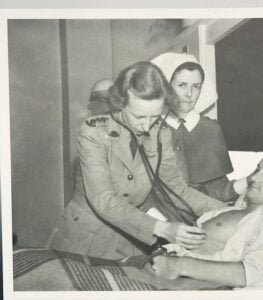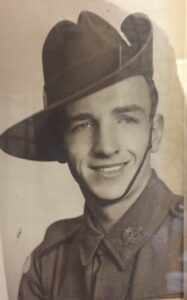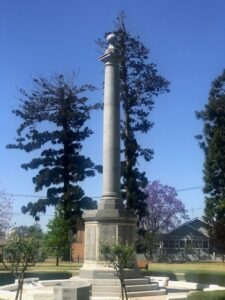ANZAC DAY Dawn Service 2024 Concord Pavilion of Honour
Robert Lusby AM
Colonel Rtd. RAAMC, Emeritus Professor University of Sydney
As we gather here to face the dawn, we remember those who emerged from the darkness onto the shores of Gallipoli and the many Australians who have served their country ever since.
One hundred and nine years ago the soldiers of the Australian and New Zealand Army Corps (ANZAC’S) landed and faced an enemy well positioned on the hills above the beach.
This was an ancient test of bravery for each man and despite the circumstances they demonstrated courage heroism and resilience beyond anything that had gone before in their lives.
The Legend of the ANZACS has served to enlighten us to this day.
It was also a test for the Nation, it enabled the nation to know itself. In the words of Charles Bean, ANZAC historian, ‘it engendered the consciousness of Australian nationhood’.
Today, as we commemorate ANZAC Day, we see before us two major conflicts in Ukraine and Palestine that acutely remind us of the horrors of war and of the fact that war has always been circling in the background of our western civilization, and many others before.
The great military theorist Carl von Clausewitz, writing after the battles of Frederic the Great and the Napoleonic wars, saw war as the continuation of political intercourse with the addition of other means – military force.
War, he said, is an act of force to compel the enemy to do our will, an extension of politics. Do we not see that today in the conflicts raging in Europe and the Middle east?
War is indeed a political, social and military phenomenon which may involve the entire population of an entity at war.
So, when the first world war broke out, it did in fact involve whole populations, in the defence of our Western Democracies against the autocratic alliances.
It was a war fought to defend the political and social nature of the emerging liberal democracies from the massive onslaught of autocratic and authoritarian Germanic powers.
It was to combat the deadly and enslaving threat that led our young nation into action.
This is what led the youth of Australia to rally and join in defence of the Western democracies. And is why the families of these young volunteers let them go to far off lands, in the belief that the way of life that had evolved in our Australian society was under threat.
In the end and as a nation we could be proud of our contribution but at an enormous price to every individual and family that contributed.
To me it has always been curious how the ANZAC legend developed out of the defeat at Gallipoli.
War can be seen as a collective of victories and losses. Despite the failure of the Gallipoli campaign and the vast deaths on the western front the allies were victorious. The final outcome is of utmost importance.
To commemorate we chose not a day such as the victory at Waterloo or the storming of the Bastille but a day that reflected our Australian nature.
The ANZAC Legend grew out of a victory of individual courage, of mateship, initiative, resilience, loyalty and love of country.
Our choice reflected the origins of our young nation and its egalitarian nature. It was seen as a coming of age, fighting alongside the great democracies with purpose and a youthful will to win.
Despite the subsequent withdrawal, the Gallipoli landing was seen as highly significant. The first ANZAC day commemorations being held a year later with ceremonies across Australia, in London and with the Australian forces guarding the Suez Canal in Egypt.
Today we remember the many wars, engagements and Peace Keeping efforts our country has been involved in.
There is much talk of genocide in the current engagements but we Australians who served as Peacekeepers in Rwanda saw what a real effort at genocide was like.
The Medical corps took the lead supported by infantry. As many as a million Rwandians died in the genocide in just over four months. Australia was asked to provide medical support.
It was the first deployment as such since the Vietnam war and successfully supported the United Nations Peacekeepers in addition to the many innocent people caught up with horrific mine injuries.
We saw the bodies piled up, the children hacked to death, the non-discriminate deaths from mines and grenades. On entering the church at Ntarama the step collapsed beneath me…it was in fact the chest of a person covered in mud and lying where he had been cut in half with a machete. The church itself filled with the bodies of those who sought shelter only to be hacked to death.
For the ANZAC’s coming like us, from civilian life, the imagery of death from war wounds must have been similar.
On the ground there are aspects of war that are not repeated, experiences to be forgotten. “He never talked about the war” is a common expression of families about their relatives returning from war.
We now recognise Post Traumatic Stress Disorder and all that entails causing ongoing issues, and the challenges to treat it.
Often forgotten is the impact on families that war has, and being here at Concord reminds me of that.
My aunt Major Gwen Lusby was the OC Medical Company at the 113 Australian General Hospital. Her brother Robert was a POW on the Burma Railway following the fall of Singapore.
At the end of the war, as the soldiers were returned many came to Concord and she would look to see if he was among the sick and wounded every day but alas, he would never return.
Like many of his mates he had died in Burma. His loss had a long lasting effect on my family but knowing he died in the service of our country helped in mourning his loss. Such losses and feelings occurred across the country.
ANZAC day is important to our Nation in bringing us together to commemorate the past sacrifices and to reflect on our freedom and our democratic way of life.
It highlights the victory and resilience of human spirit in overcoming the impact of war in all its aspects.
Lest We Forget
Gwen Lusby Robert Lusby Singleton War Memorial
#aroundhermitage #huntervalley #bobsblog #tintillaestate
Author: Robert Lusby AM
©Around Hermitage Association




